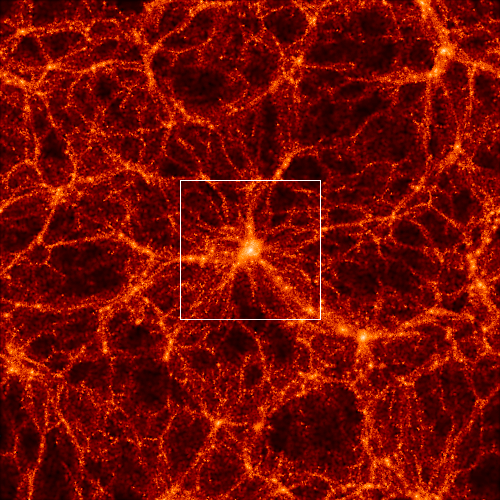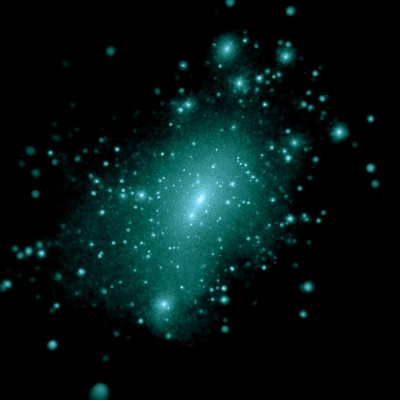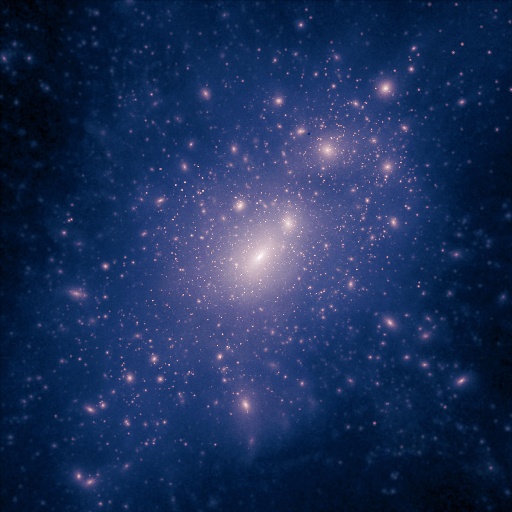High-resolution simulations of clusters of galaxies
As a starting point, we used the LCDM-GIF simulation,
carried out by the Virgo
consortium. The following panel shows a slice through the simulation
box, centered by Volker Springel on the richest cluster that has formed
in the periodic simulation volume. Using GADGET
together with Bepi' Tormens
zooming initial conditions generator ZIC,
we have resimulated this object of mass ~10e15 Msun/h
several times, with ever increasing numerical resolution. In the last step,
we reached a mass resolution of 4.7e7 Msun/h, with
about 20 million particles ending up in the virial radius of the final
cluster.

The following two pictures compare the original
cluster in the GIF simulation with one of our resimulations. In the latter,
the resolution gradually decreases with increasing distance from the center.
You may be able to see residuals of the spherical grid structure used in
this multi-mass technique towards the edges of the right picture.
However, in the the region of the cluster itself, glass-like initial conditions
are used and the resolution is much higher than in the original parent
simulation.
 The vast increase of resolution makes rich substructure
in the cluster visible. Dark matter halos in CDM universes are far from
being smooth objects - they exhibit a large number of subhalos. As we've
done in picture on the top, we now enlarge the region in the white square
still further, thereby zooming in onto the cluster itself....
The vast increase of resolution makes rich substructure
in the cluster visible. Dark matter halos in CDM universes are far from
being smooth objects - they exhibit a large number of subhalos. As we've
done in picture on the top, we now enlarge the region in the white square
still further, thereby zooming in onto the cluster itself....
 Here are a few more examples of substructure in
our clusters. The blue picture at the bottom shows the cluster in our highest
resolution simulation. At the final time at redshift zero, our subhalo
identification algorithms are able to identify almost 5000 gravitationally
bound subhalos in this object.
Here are a few more examples of substructure in
our clusters. The blue picture at the bottom shows the cluster in our highest
resolution simulation. At the final time at redshift zero, our subhalo
identification algorithms are able to identify almost 5000 gravitationally
bound subhalos in this object.


If you like, you may download a transparency
showing the dark matter substructure in one of our cluster simulations.
Last modified: Jan 20, 2000 vspringel@cfa.harvard.edu





